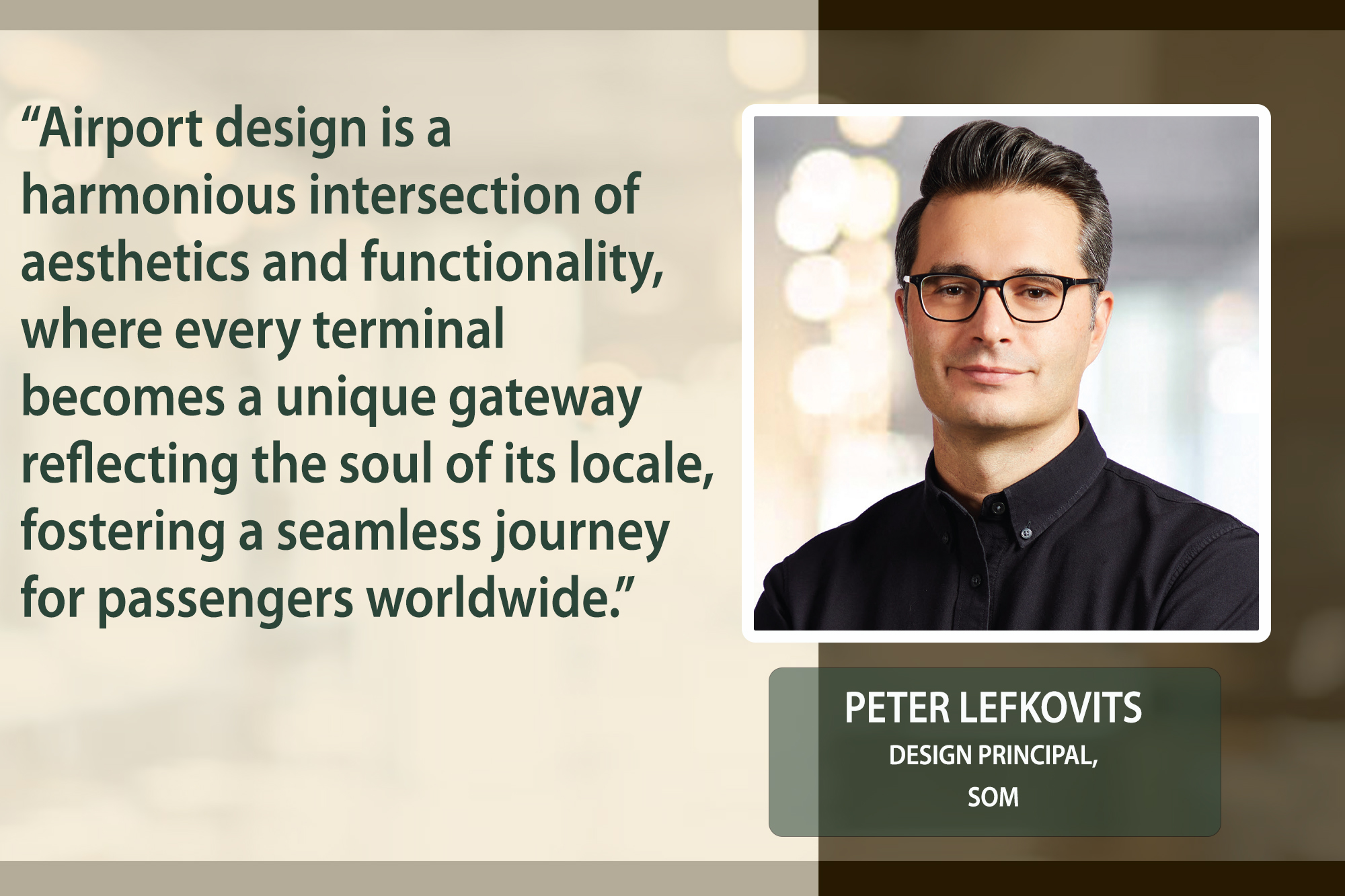An airport design approach for timeless efficiency and functionality

“Airport design is a harmonious intersection of aesthetics and functionality, where every terminal becomes a unique gateway reflecting the soul of its locale, fostering a seamless journey for passengers worldwide.” Peter Lefkovits, Design Principal, SOM
Can you provide an overview of your experience working on airport projects and highlight some of the key projects you’ve been involved in?
As a Design Principal at SOM with over fifteen years of expertise in the aviation sector, I have led the design and implementation of several award-winning airport terminals worldwide. Earlier this year, we completed the new terminal at Kansas City International Airport in the United States. In India, I worked at Chhatrapati Shivaji International Airport Terminal 2 and Terminal 2 at Kempegowda International Airport in Bengaluru. The conceptual framework for these complex facilities grew from my interest in synthesising architecture, structure, and environmental design, an approach that underlies all of my work.
Airports vary greatly in size and purpose. What unique design challenges do you face when working on airport projects?
Airports vary from country to country, even region to region. What airports have in common is the notion of connectivity. In most cases, airports may not be the beginning or end of a traveller’s journey. Instead, it’s a significant point of departure or arrival that must then connect to other forms of transportation like cars, buses, trains, etc. The challenge and opportunity are designing an intuitive environment to navigate, seamlessly connect with transit, and foster a memorable, pleasant, and enjoyable experience for passengers.
How do you balance airport design’s aesthetic and functional aspects to create a welcoming and efficient space for passengers and staff?
We can successfully integrate the aesthetic qualities with the functional requirements of a terminal design by harnessing a collective approach to the design. The best ideas don’t emerge in a vacuum; they emerge from the intersection of different perspectives, disciplines, and cultures. SOM has a long legacy of interdisciplinary design. We can deliver highly functional and innovative solutions by integrating planning, architecture, structures, and sustainability. When designing and planning airports, we balance developing solutions for the significant terminal systems aircraft, parking, baggage handling, passenger screening, security systems, etc, with creating a comfortable and welcoming experience for passengers.
Airports often need to incorporate the latest technology and security features. Can you discuss how you integrate these elements into the architectural design while maintaining a cohesive look and feel?
From aircraft to security processing technology, airports are constantly evolving. Given the time it takes to design and build a terminal, some technologies that exist at the start of the project may need to be updated by the time the terminal opens. Our process accounts for the “systems” of a terminal just as equally as the traveller experience. In our design and planning, we envision how the terminal will function once it opens and in the future. We design built-in flexibility for the building systems, structures, planning, and architecture, which allow terminal operators to adapt to future needs and opportunities that we may not even know about.
How does the incorporation of local art and culture in airport terminal design enhance the travel experience and reflect the unique identity of each location?
Our approach to designing airport terminals around the globe is rooted in a sense of responsibility to deliver designs that truly reflect the identity, culture, and needs of the communities they serve. We often engage artists and designers to develop a deeper and more meaningful understanding of a place. These collaborations often inspire the distinctive design of a terminal and bespoke installations throughout the passenger journey. At Kansas City International Airport, one percent of the project budget was dedicated to commissioning artists as part of a comprehensive public art program. Soo Sunny Park, Leo Villareal, Willie Cole, and a host of other artists contributed to the terminal’s sense of place in a variety of ways—from honouring Kansas City’s moniker as the “City of Fountains” to evoking its critical contribution to the history of jazz. We are also proud of what we achieved at Mumbai T2 and Bangalore T2—both distinctive in their design and expression, but are true modern expressions of Indian culture. They have both become new ‘gateways’ to India.
For more info visit : https://www.somdesign.in/
Cookie Consent
We use cookies to personalize your experience. By continuing to visit this website you agree to our Terms & Conditions, Privacy Policy and Cookie Policy.










